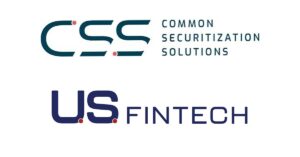Imagine this hypothetical scenario: Emma and Zach bought their first home 10 years ago, and they were ready to trade up before rising interest rates deterred them. They have school-age twins, and both spouses are working remotely and need home offices. The couple have decided to build a 1,000-square-foot addition and are interested in a home equity line of credit (HELOC). Now their challenge is finding the right lender.
Situations like this are opening the home equity market to mortgage lenders — beyond only banks and credit unions — and represent a lucrative diversification opportunity as first mortgages and refinances cool down.
Streamlined experience
Penetrating the home equity lending market is no panacea for lenders and originators who want to compensate — even partially — for the decline in other types of originations. Simply put, second mortgages and HELOCs are not one-to-one replacements for purchase or refinance loans.
A $100,000 home equity loan doesn’t come close to a $500,000 first mortgage in terms of revenue. Lenders must maximize their HELOC volume to even approach the numbers they could previously expect. They also must minimize costs to get closer to the same level of profitability.
Scaling to the volume they need, however, is challenging, as these products can be as friction prone as first mortgages at every stage (title, valuation, closing and post-closing). This is especially true when lenders are working with multiple partners, each of whom may use different technology platforms. Moreover, to meet borrower needs, no two transactions are the same. With mass production out of the question, many banks and credit unions are currently hard-pressed to reach the level of growth needed to improve their financial situations.
This doesn’t have to be the case. There are new ways to offer distinctly different, “bespoke” home equity products to individual borrowers while maximizing efficiency, speed and margins every time.
Delivering this streamlined experience with agility and precision also is part of the recipe for wowing current clients and cultivating them for future business.
Targeted markets
Before beginning a home equity rollout, lenders and originators should define their target markets and the products (loan sizes, types, etc.) that these clients are most likely to want. This process will help them map out where they should put their energy and efforts, from marketing and sales to service and fulfillment.
What can they offer most easily and efficiently to meet pent-up demand? Indeed, even bespoke loan products can be grouped into general buckets. An in-depth review of current clients will help lenders identify trends.
Data on specific properties (such as the estimated equity and value, the most recent sales price, the time since the previous sale and more) will paint a valuable picture. If lenders cannot pull up this information in-house, many of their title-service partners will have software to uncover it. Once lenders have studied this data to identify profitable borrower segments and products, they should consider targeted snail-mail or email campaigns to generate applications.
Optimized execution
What happens when these campaigns lead to new home equity clients? How can lenders complete each transaction as cost-efficiently as possible, all while impressing?
For each loan, lenders should meld together the right mix of services and then optimize their execution. This includes full title reports, in-person and drive-by appraisals, remote desktop appraisals and automated valuation models, and flood certifications, if applicable.
This also will involve closing with traditional in-person wet signings, remote online notarization (RON) or in-person electronic notarization (IPEN). Post-closing services such as recording, escrow and disbursements also must be considered.
For instance, an $800,000 second mortgage for a high net worth borrower may need a full title report, an in-person appraisal and a traditional wet signing. But a $24,000 HELOC may only require a legal and vesting report, a drive-by appraisal and an IPEN signing.
But how can lenders actually make money? This is where technology-based products offer a potential advantage. Lenders that use them are frequently getting to the closing table in five days or less and reducing their overall cycle times by half.
Technological advantage
For instance, advanced artificial intelligence-driven “instant title” decision engines are clearing many titles to close in just seconds. Remote desktop appraisals, too, are shortening valuation reports by days.
Traditionally, appraisers have spent up to 50% of their work time driving to properties to complete appraisal inspections, slowing the reporting cycle. But today’s remote technologies allow appraisers to look through the camera of a property contact from their desks to instantly upload photos, videos and floor plans — all critical information that informs the appraiser’s final analysis.
New RON and IPEN technologies are optimizing closing and post-closing, too, by speeding both funding and the e-recording of deeds (in states that permit one or both approaches). Because they mimic the wet signing of paper documents (uploaded into a tablet), IPEN solutions can be especially helpful for individuals who are less comfortable with technology and prefer the familiarity of an electronic stylus that looks like a pen.
● ● ●
The old adage, “never let them see you sweat,” couldn’t be more applicable. An approach that takes the effort and expense out of home equity lending while giving every client ample attention can keep mortgage lenders and originators strong, positioning them for more growth ahead. ●
-
Nathan Bossers is president of Boston National Title Agency LLC, one of the nation’s largest title agencies. He joined the company in 2013 as chief operating officer and was promoted to his current role in 2020. Boston National Title is part of the Incenter family of companies, which deploys innovative solutions for optimizing mortgage industry performance.
View all posts







